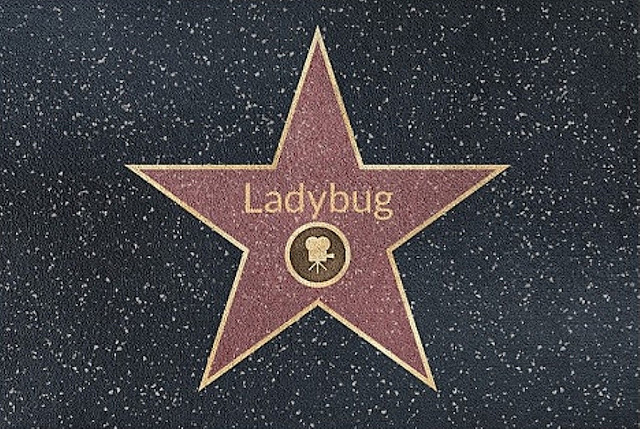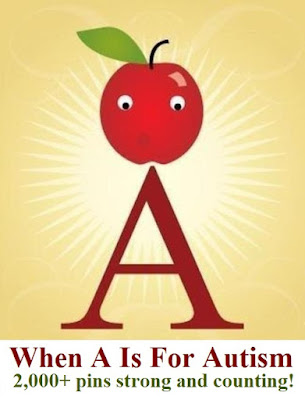Monday, May 31, 2010
Memorial Day: A Day Of Rememberance
Memorial Day was originally known as Decoration Day because it was a time set aside to honor the nation's Civil War dead by decorating their graves. It was first widely observed on May 30, 1868, to commemorate the sacrifices of Civil War soldiers, by proclamation of General John A. Logan of the Grand Army of the Republic, an organization of former sailors and soldiers. On May 5, 1868, Logan declared in General Order No. 11 that:
The 30th of May, 1868, is designated for the purpose of strewing with flowers, or otherwise decorating the graves of comrades who died in defense of their country during the late rebellion, and whose bodies now lie in almost every city, village, and hamlet churchyard in the land. In this observance no form of ceremony is prescribed, but posts and comrades will in their own way arrange such fitting services and testimonials of respect as circumstances may permit.
During the first celebration of Decoration Day, General James Garfield made a speech at Arlington National Cemetery, after which 5,000 participants helped to decorate the graves of the more than 20,000 Union and Confederate soldiers buried in the cemetery.
This 1868 celebration was inspired by local observances of the day in several towns throughout America that had taken place in the three years since the Civil War. In fact, several Northern and Southern cities claim to be the birthplace of Memorial Day, including Columbus, MI; Macon, GA; Richmond, VA; Boalsburg, PA; and Carbondale, IL.
In 1966, the federal government, under the direction of President Lyndon Johnson, declared Waterloo, NY, the official birthplace of Memorial Day. They chose Waterloo, which had first celebrated the day on May 5, 1866, because the town had made Memorial Day an annual, community-wide event during which businesses closed and residents decorated the graves of soldiers with flowers and flags.
By the late 1800s, many communities across the country had begun to celebrate Memorial Day and, after World War I, observances also began to honor those who had died in all of America's wars. In 1971, Congress declared Memorial Day a national holiday to be celebrated the last Monday in May. (Veterans Day, a day set aside to honor all veterans, living and dead, is celebrated each year on November 11th.)
Today, Memorial Day is celebrated at Arlington National Cemetery with a ceremony in which a small American flag is placed on each grave. Also, it is customary for the president or vice-president to give a speech honoring the contributions of the dead and lay a wreath at the Tomb of the Unknown Soldier. About 5,000 people attend the ceremony annually.
Wednesday, May 26, 2010
A Masterpiece Of Emotion...
Spend all your time waiting
for that second chance,
for a break that would make it okay.
There's always one reason
to feel not good enough
and it's hard at the end of the day.
I need some distraction.
Oh, beautiful release,
memory seeps from my veins.
Let me be empty
and weightless and maybe,
I'll find some peace tonight.
In the arms of an angel
fly away from here.
From this dark cold hotel room
and the endlessness that you fear.
You are pulled from the wreckage
of your silent reverie.
You're in the arms of the angel,
may you find some comfort there.
So tired of the straight line
and everywhere you turn,
there's vultures and thieves at your back.
And the storm keeps on twisting.
You keep on building the lie
that you make up for all that you lack.
It don't make no difference,
escaping one last time.
It's easier to believe in this sweet madness,
oh, this glorious sadness that brings me to my knees.
In the arms of an angel
fly away from here.
From this dark cold hotel room
and the endlessness that you fear.
You are pulled from the wreckage
of your silent reverie.
You're in the arms of the angel,
may you find some comfort there.
You're in the arms of the angel,
may you find some comfort here.
Tuesday, May 18, 2010
ESDS "WALK WITH ME" IS COMING TO PHILLY!

Walk for Autism...
Walk for Cerebral Palsy...
Walk for Down Syndrome...
Walk for all disabilities...
Saturday, June 12, 2010
Philadelphia Art Museum
Check-in/Registration 8:00am
5K USATF Sanctioned Run 9:00am
1 or 2 mile Family Fun Walk 9:35am
National Sponsors:
CVS Caremark, Century 21, Amway Global
Walk for Cerebral Palsy...
Walk for Down Syndrome...
Walk for all disabilities...
Saturday, June 12, 2010
Philadelphia Art Museum
Check-in/Registration 8:00am
5K USATF Sanctioned Run 9:00am
1 or 2 mile Family Fun Walk 9:35am
National Sponsors:
CVS Caremark, Century 21, Amway Global
Local Sponsors:
Century 21, First Financial Group, Metro Philadelphia,
PhRMA, Kreischer Miller, Hatfield, Ride-Away
For more information and online registration:
Visit WALKWITH ME.ORG or call 610-565-2353
Philadelphia Event Manager:
Contact Liz Graham by phone or email at
484-234-8007 or lgraham@easterseals-sepa.org.
I'm registered for this event:
Click here to see my personal "Walk With Me" page
Spread the word!
For more information and online registration:
Visit WALKWITH ME.ORG or call 610-565-2353
Philadelphia Event Manager:
Contact Liz Graham by phone or email at
484-234-8007 or lgraham@easterseals-sepa.org.
I'm registered for this event:
Click here to see my personal "Walk With Me" page
Spread the word!
Thursday, May 13, 2010
Retrospective: The 25th Anniversary Of "MOVE"

When he left office in 1992, W. Wilson Goode, Sr. set about putting what he called his "real feelings" about the MOVE tragedy into writing. "Sadly I realized that the police had killed two birds with one stone, MOVE and me," Goode wrote in his autobiography, "In Goode Faith".
But today, at 71 years old, with two more decades of perspective, a doctorate from a Baptist seminary, and a distinguished gray goatee, the Philadelphia's first black mayor says he has moved on from such a harsh assessment of the significance of May 13, 1985. "It's just one day in the life," he said in a recent interview in his sixth-floor office at 2000 Market Street, where he acts as Executive Director of Amachi, a nationally recognized program that matches children of incarcerated parents with mentors.
"I view it as an aberration in my life," Goode said. "I don't view it as part of a continuum in my life. Mistakes were made. You put it in perspective. You don't let it paralyze you. You don't let enemies or anyone define you by it. "I have no explanation as to why it happened or how it happened," he said. "It is something that should never have happened."
Goode said he has never discussed MOVE with his wife, Velma, or his three children, including City Councilman W. Wilson Goode, Jr., who himself refused to discuss even the idea that the family did not talk about the subject. In recent weeks, though, Goode resigned himself to a series of interviews, on camera and off, to coincide with the 25th anniversary of the MOVE assault, in which a botched police plan left 11 people dead, including 5 children, and 250 people homeless. But he stressed that in 25 years, the only people to ever bring up MOVE have been Philadelphia journalists.
Goode said, "I have to say I don't see it as the media sees it, as the darkest day in the history of the city. In the last 25 years, I've been to 46 out of 50 states, and the issue of MOVE has never been raised with me. I've never been confronted by anyone about the issue. People who have known me by my reputation see it as an aberration, and see it as something that happened one day in my life and not a pattern. I do not believe that people think about it any more. Keep in mind, that people who are now 30 years old were 5 years old. People in the city under 25 or 30 years old, that's a whole lot of people in the city."
Indeed, at a recent appearance at the Fels School of Government at the University of Pennsylvania, no student asked about MOVE, nor did Goode himself bring it up. He has personally become "spiritually stronger" as a result of the tragedy. He serves as the minister of administration at the First Baptist Church of Paschall in Southwest Philadelphia, and said he had always felt a special relationship with God that only intensified after such a severe testing in 1985. "I did not feel like I was in a spiritual wasteland," he said of the immediate aftermath of MOVE. "When I did my devotions this morning, I read where it says, 'In life there would be joy and tribulations.' And so bad things happen to good people despite their best efforts. And sometimes with God's permission."
Goode said he is not suggesting there is nothing to be learned from the tragedy. And, as the mayor who authorized the police to pursue arrest warrants of MOVE members that day, he says he was never told they planned to use a bomb to dislodge the bunker built atop the house, and was as stunned as anyone to see police and fire officials allowing the fire to burn uncontrolled for 45 minutes. But, he says he takes full responsibility.
The MOVE Commission investigating the events of May 13th was critical in its findings. "The plan to bomb the MOVE house was reckless, ill-conceived, and hastily approved. Dropping a bomb on an occupied rowhouse was unconscionable and should have been rejected out of hand . . ." by the mayor, the managing director, the police commissioner, and the fire commissioner.
Charles W. Bowser, a member of the MOVE Commission, wrote separately that "Mayor Goode cannot be held responsible for the dark tragedy of May 13th for the worst reason of all: He was not leading when it counted the most." But, Goode is not interested in second-guessing. Instead, he has distilled the MOVE catastrophe into a handful of lessons.
First: "Make sure you understood what the total plan is before authorization to do it," he said. Goode was criticized for delegating too much authority to Police Commissioner Gregor J. Sambor and for being in the dark about details of the plan.
Second: "If you want to negotiate with people holed up inside a facility, don't send police officers. Send trained negotiators. And, don't allow the police officers to be in charge of what happens at the scene. Make sure someone else is there at the scene." Goode remained at his home and then his office for much of the day, discouraged from being on site or at the command center by threats against him and by his conviction that the confrontation was a police operation the mayor should not direct.
Third: "The third lesson is all life is important. Any loss of life is tragic, especially when it did not have to happen."
Fourth: "You need not be a bad person to have bad things happen on your watch." While not dwelling on that day, Goode said, he does think about it daily. "Daily, I drive by the block where it occurred," he said. "Every week, I talk with people who live there who were hurt by what happened." However, he says the MOVE experience was so unique that its lasting lessons and impact are limited. "Keep in mind that no other mayor, no other city, at any point in time ever had an issue like this. That's why it must be viewed as an aberration."
He said the experience informs some of his preaching these days, but not all. "It is present as a revelation from God to use it as a context to make a point," he said. "That point could be, tragic things happen in the lives of cities. Sometimes things happen to leaders, and it's a test of what they're made of. That's the context. The testing of one's ability to continue to stay focused. "I take full responsibility for it," he said. "I try to make up for it every day."
Goode said he raised the issue of MOVE himself in a recent lecture on crisis leadership at the Center for Urban Theology, as one of three cases where management strategies and what God demands of leaders could be gauged. The other two were Three-Mile Island, which took place while he was chairman of the Pennsylvania Utility Commission, and the 1986 trash strike. "God expects us to stay focused, not to get pulled to the left or to the right. How do leaders act? What they do is, they keep on leading, they keep their eye on important things."
Goode believes he succeeded in doing just that in his remaining time as mayor, in which he says he spearheaded the renaissance of Center City and began the city's homeless and anti-graffiti agencies, and in the decades since, serving with the U.S. Department of Education before taking over the Amachi program. "I empowered by God felt every step of the way to do the best job I could to help this city. I woke up every morning for eight years with excitement."
Goode said he focused on trying to mitigate the lasting damage done to the neighbors whose houses burned, but he acknowledged that the badly deteriorated block even 25 years later shows that neither he nor subsequent city administrations have succeeded in that. "One would not be human if one would not see that as a monument to what happened," he said, of the 6200 block of Osage Avenue.
Now a grandfather of two girls with whom he texts back and forth on a daily basis, Goode says he was not worried that his legacy would be burdened by that one day. "I don't have any worry in my mind that people will define me by that one day," he said. "My accomplishments are too numerous to simply define me, and say 'That's who he is.' "
But today, at 71 years old, with two more decades of perspective, a doctorate from a Baptist seminary, and a distinguished gray goatee, the Philadelphia's first black mayor says he has moved on from such a harsh assessment of the significance of May 13, 1985. "It's just one day in the life," he said in a recent interview in his sixth-floor office at 2000 Market Street, where he acts as Executive Director of Amachi, a nationally recognized program that matches children of incarcerated parents with mentors.
"I view it as an aberration in my life," Goode said. "I don't view it as part of a continuum in my life. Mistakes were made. You put it in perspective. You don't let it paralyze you. You don't let enemies or anyone define you by it. "I have no explanation as to why it happened or how it happened," he said. "It is something that should never have happened."
Goode said he has never discussed MOVE with his wife, Velma, or his three children, including City Councilman W. Wilson Goode, Jr., who himself refused to discuss even the idea that the family did not talk about the subject. In recent weeks, though, Goode resigned himself to a series of interviews, on camera and off, to coincide with the 25th anniversary of the MOVE assault, in which a botched police plan left 11 people dead, including 5 children, and 250 people homeless. But he stressed that in 25 years, the only people to ever bring up MOVE have been Philadelphia journalists.
Goode said, "I have to say I don't see it as the media sees it, as the darkest day in the history of the city. In the last 25 years, I've been to 46 out of 50 states, and the issue of MOVE has never been raised with me. I've never been confronted by anyone about the issue. People who have known me by my reputation see it as an aberration, and see it as something that happened one day in my life and not a pattern. I do not believe that people think about it any more. Keep in mind, that people who are now 30 years old were 5 years old. People in the city under 25 or 30 years old, that's a whole lot of people in the city."
Indeed, at a recent appearance at the Fels School of Government at the University of Pennsylvania, no student asked about MOVE, nor did Goode himself bring it up. He has personally become "spiritually stronger" as a result of the tragedy. He serves as the minister of administration at the First Baptist Church of Paschall in Southwest Philadelphia, and said he had always felt a special relationship with God that only intensified after such a severe testing in 1985. "I did not feel like I was in a spiritual wasteland," he said of the immediate aftermath of MOVE. "When I did my devotions this morning, I read where it says, 'In life there would be joy and tribulations.' And so bad things happen to good people despite their best efforts. And sometimes with God's permission."
Goode said he is not suggesting there is nothing to be learned from the tragedy. And, as the mayor who authorized the police to pursue arrest warrants of MOVE members that day, he says he was never told they planned to use a bomb to dislodge the bunker built atop the house, and was as stunned as anyone to see police and fire officials allowing the fire to burn uncontrolled for 45 minutes. But, he says he takes full responsibility.
The MOVE Commission investigating the events of May 13th was critical in its findings. "The plan to bomb the MOVE house was reckless, ill-conceived, and hastily approved. Dropping a bomb on an occupied rowhouse was unconscionable and should have been rejected out of hand . . ." by the mayor, the managing director, the police commissioner, and the fire commissioner.
Charles W. Bowser, a member of the MOVE Commission, wrote separately that "Mayor Goode cannot be held responsible for the dark tragedy of May 13th for the worst reason of all: He was not leading when it counted the most." But, Goode is not interested in second-guessing. Instead, he has distilled the MOVE catastrophe into a handful of lessons.
First: "Make sure you understood what the total plan is before authorization to do it," he said. Goode was criticized for delegating too much authority to Police Commissioner Gregor J. Sambor and for being in the dark about details of the plan.
Second: "If you want to negotiate with people holed up inside a facility, don't send police officers. Send trained negotiators. And, don't allow the police officers to be in charge of what happens at the scene. Make sure someone else is there at the scene." Goode remained at his home and then his office for much of the day, discouraged from being on site or at the command center by threats against him and by his conviction that the confrontation was a police operation the mayor should not direct.
Third: "The third lesson is all life is important. Any loss of life is tragic, especially when it did not have to happen."
Fourth: "You need not be a bad person to have bad things happen on your watch." While not dwelling on that day, Goode said, he does think about it daily. "Daily, I drive by the block where it occurred," he said. "Every week, I talk with people who live there who were hurt by what happened." However, he says the MOVE experience was so unique that its lasting lessons and impact are limited. "Keep in mind that no other mayor, no other city, at any point in time ever had an issue like this. That's why it must be viewed as an aberration."
He said the experience informs some of his preaching these days, but not all. "It is present as a revelation from God to use it as a context to make a point," he said. "That point could be, tragic things happen in the lives of cities. Sometimes things happen to leaders, and it's a test of what they're made of. That's the context. The testing of one's ability to continue to stay focused. "I take full responsibility for it," he said. "I try to make up for it every day."
Goode said he raised the issue of MOVE himself in a recent lecture on crisis leadership at the Center for Urban Theology, as one of three cases where management strategies and what God demands of leaders could be gauged. The other two were Three-Mile Island, which took place while he was chairman of the Pennsylvania Utility Commission, and the 1986 trash strike. "God expects us to stay focused, not to get pulled to the left or to the right. How do leaders act? What they do is, they keep on leading, they keep their eye on important things."
Goode believes he succeeded in doing just that in his remaining time as mayor, in which he says he spearheaded the renaissance of Center City and began the city's homeless and anti-graffiti agencies, and in the decades since, serving with the U.S. Department of Education before taking over the Amachi program. "I empowered by God felt every step of the way to do the best job I could to help this city. I woke up every morning for eight years with excitement."
Goode said he focused on trying to mitigate the lasting damage done to the neighbors whose houses burned, but he acknowledged that the badly deteriorated block even 25 years later shows that neither he nor subsequent city administrations have succeeded in that. "One would not be human if one would not see that as a monument to what happened," he said, of the 6200 block of Osage Avenue.
Now a grandfather of two girls with whom he texts back and forth on a daily basis, Goode says he was not worried that his legacy would be burdened by that one day. "I don't have any worry in my mind that people will define me by that one day," he said. "My accomplishments are too numerous to simply define me, and say 'That's who he is.' "
Wednesday, May 12, 2010
Philadelphia's Finest???
I remember the night that this incident happened. I was awakened out of my sleep in the wee-hours of the morning because helicopters were circulating the neighborhood for several hours. I got very little sleep that night and I was not a happy camper when I got up in the morning. I heard the next day that the police was scouring the neighborhood looking for someone who had shot a police officer.
Sometime after 4:00am on April 5th, after Sgt. Robert Ralston was taken to the Hospital of the University of Pennsylvania with a shoulder wound, the department's top brass rushed to his side, including Police Commissioner Charles H. Ramsey, who was sick with a stomach virus. Ralston's injury turned out to be minor, but when he started telling the tale of his brush with disaster, the story raised red flags almost immediately.
Ralston, 46 years old, said he had been shot in West Philadelphia by a black man who pointed a revolver at his head, then grazed him in the shoulder when he knocked the gun away from the man. He said he had returned fire and hit the man in the chest, but no gunshot victim turned up in any hospital. When Ralston called his children to report what happened, one police officer at the hospital noticed Ralston seemed very eager to appear heroic. Within hours of the shooting, Ralston got out of his hospital bed, picked up his bloodied shirt, and put it back on. He then returned to the scene to help with the investigation. "It was strange," said Deputy Commissioner William Blackburn. "His reactions didn't add up."
Over the next few weeks, as police searched the scene and the neighborhood for clues, Ralston's tale continued to unravel. Gunpowder residue found on Ralston's shirt matched the ammunition in his own service weapon and suggested he'd been shot at point-blank range. Ralston made mistakes when describing the layout of the area where the shooting took place. And, although Ralston was adamant that he shot the assailant, no blood was found at the scene.
Around 4:00am on Tuesday, after four hours of questioning by detectives at Police Headquarters, Ralston admitted that he had shot himself, fabricated the story, and made a false report. Ramsey, who announced the officer's admission five hours later at a news conference, called the incident "a terrible and embarrassing chapter in our history." John McNesby, president of the Fraternal Order of Police, Lodge 5, who also raced to the hospital to meet with Ralston when he was shot last month, expressed his disgust. "The community has supported this city's police officers through so much, every time we lose an officer," McNesby said. "To have something like this come along that could possibly tear that down is a disgrace."
Ralston, a married father of five and a 21-year veteran of the department, was suspended Tuesday with the intent to dismiss. He will officially be off the force in a month and his badge number will be retired so no officer will ever share the number with him. Ralston will not face criminal charges because he was offered immunity from prosecution in exchange for his confession, which means he will more than likely receive his pension, Ramsey said. "It was the only way we could tie this up," Ramsey said of the arrangement. Ralston's pension has not yet been calculated, but a city official estimated that he would collect about $24,000 annually if he took his pension now. However, some of that may be used to recoup the expense of the massive manhunt that was sparked by his lies, Ramsey said.
Police spent hours combing the West Philadelphia neighborhood for possible suspects in the shooting, and the department has not yet calculated how much the investigation cost. Rumors had circulated in the department for weeks that Ralston made up the story. Some sources speculated that he wanted attention, a commendation from the department, or a transfer to another district. Ramsey said he did not know why Ralston had made up the story. "The big question in everybody's minds is why," said Chief Inspector Anthony DiLacqua, of the Internal Affairs division. "There's only one person who knows the answer to that question." Ralston could not be reached for comment. There was no answer at the door of his home in the Northeast.
Ralston was hired in March 1989. He was promoted to made sergeant in 2007 and last year, he earned a salary of $65,424. He spent much of his career working in the 25th District in North Philadelphia. In 1995, after he was named in a complaint, an investigator found that Ralston had hit a suspect on the head while arresting him and that he had mishandled other aspects of the arrest. Sometime after 2003, Ralston went to the relatively quiet 4th District, which covers part of South Philadelphia. He recently was transferred to the much busier, West Philadelphia-based 19th District, a move that police sources said Ralston was very unhappy about.
Ralston was patrolling near 56th Street and Lancaster Avenue, in the city's Overbrook section, early the morning of April 5th. Police were investigating a string of burglaries at a strip mall in the area, and Ralston told police he was on the lookout for anything suspicious. He said he saw two men on the railroad tracks and tried to stop them, but one ran and the other drew a silver revolver and put it to Ralston's head. Ralston told police he had smacked the gun out of the way, but it went off and grazed him. At the time, officials said Ralston's quick reaction might have saved his life. Ralston told police the assailant was a black man with his hair in corn rows and he had a mark or tattoo under his left eye.
Ramsey said Ralston apparently described his assailant as black because the area where the shooting took place is predominantly African American. "It's troubling in a lot of ways," Ramsey said. "It inflames racial tensions in our community and that's certainly something we don't need." Ramsey said it was fortunate that officers never stopped or arrested anyone matching Ralston's description of the gunman. Officers with dogs searched along the tracks and woods at 52d Street and Lancaster Avenue and knocked on doors in the neighborhood, looking for people who might have heard or seen something. The FOP posted a $10,000 reward for information leading to the suspect's arrest.
From the start, police said, the facts of Ralston's story didn't add up. But there was little evidence found that could disprove his story, either. No one witnessed the shooting. There were no surveillance cameras close by, and the incident took place in an area that is relatively desolate even in daylight hours. "Putting the truth together took a great deal of effort," DiLacqua said. In the end, police concluded they could not charge Ralston unless he confessed. District Attorney Seth Williams praised Ramsey's swift move to fire Ralston. "We took a badge and a gun from a person whose actions proved him unfit for either. Ultimately, our goal was to get to the truth," Williams said in a statement. "Unfortunately, we could only arrive at the truth through his statement given to the police and that statement cannot be used against him."
Now that the entire incident has turned out to be completely bogus, I would like to say that I'm appalled at the actions of this police officer but the reality is, I'm not. My family has had personal experiences in the past with needing the assistance of the police at the 19th District and I gotta tell you, we were not impressed with their performance in the least. In fact, they were next to NO HELP at all. Anyone who is supposed to uphold the law and would do what he did should be dismissed, without question.
Monday, May 10, 2010
Sunday, May 9, 2010
All About Mother's Day

Did Mother's Day begin in the United States?
No. Long, long, ago, in ancient Greece, the people paid tribute to Rhea, the Mother of the Gods, each spring. A little later in history it is noted that England paid homage to mothers on "Mothering Sunday," the fourth Sunday of Lent.
In 1872, Julia Ward Howe (who wrote the words to the Battle hymn of the Republic) suggested the idea of Mother's Day, but it was Miss Anna M. Jarvis (1864-1948), of Philadelphia, who began a letter-writing campaign to a variety of influential people that made Mother's Day a national holiday.
Why did Miss Jarvis think it was so important to have Mother's Day?
Miss Jarvis was very close to her mother Mrs. Anna Reese Jarvis. Anna's mother died in May of 1905, when Anna was 41 years of age. Anna was not married and from the time of her mother's death cared for her blind sister, Ellsinore. Anna missed her mother very much and felt that children should appreciate their mother's more while they're still alive. Anna hoped Mother's Day would increase respect and love and strengthen family bonds.
So when was the first Mother's Day?
In 1907 Anna persuaded her mother's church in Grafton, West Virginia to celebrate Mother's Day on the second anniversary of her mother's death, the 2nd Sunday of May. By the next year, 1908, Mother's Day was also celebrated in Philadelphia. In 1910 the first Mother's Day proclamation was issued by the governor of West Virginia. Oklahoma celebrated Mother's Day that year also. By 1911 every state observed Mother's Day. The Mother's Day International Association was incorporated on December 12, 1912, with the purpose of furthering meaningful observations of Mother's Day.
When did Mother's Day become official?
In May, 1913, The House of Representatives unanimously adopted a resolution requesting the President, his Cabinet, members of Congress, and all officials of the federal government to wear a white carnation on Mother's Day. Congress passed another Joint Resolution May 8, 1914, designating the second Sunday in May as Mother's Day. On Mother's Day the U.S. flag is to be displayed on government buildings and at people's homes "as a public expression of our love and reverence for the mothers of our country." President Woodrow Wilson issued the first proclamation making Mother's Day an official national holiday.
Many people give roses on Valentines Day, is there a particular flower I should give my mom on Mother's Day?
Miss Anna Jarvis's mother's favorite flower was the white carnation. This flower was chosen to represent the sweetness, purity and endurance of mother love. However, the red carnation has since become the symbol of a living mother while white signifies that one's mother has died.
Do other countries celebrate Mother's Day?
You bet they do! Denmark, Finland, Italy, Turkey, Australia and Belgium celebrate Mother's Day on the same day as the United States. Other countries celebrate Mother's Day as well, though not on the same day.
Enjoy your special day!
Thursday, May 6, 2010
Saturday, May 1, 2010
Subscribe to:
Posts (Atom)
Watch your step!
This household is protected by Ladybug Home Security.
 As a Christian who is active on the internet, I hold myself to certain standards of conduct:
The Nazarene Network @ NazNet.com |




































+of+JBHS+30th+Reunion.jpg)








































































 🕊 Rest in Paradise Dad
🕊 Rest in Paradise Dad 🕊 Rest in Paradise Mom
🕊 Rest in Paradise Mom

















